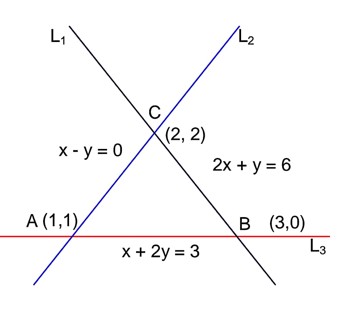Maths
Get insights from 6.5k questions on Maths, answered by students, alumni, and experts. You may also ask and answer any question you like about Maths
Follow Ask QuestionQuestions
Discussions
Active Users
Followers
New question posted
3 months agoNew answer posted
3 months agoContributor-Level 10
Taking the limit y x on both sides
Hence, modulus cannot be zero. Hence f' (x) = 0. Integrating, we get f (x) = c
at x = 0, f (0) = c = 1
Hence, option (A) is correct option.
New answer posted
3 months agoContributor-Level 10
x – y = 0 . (i)
x + 2y = 3. (ii)
2x + y = 6 . (iii)
Solving (i) & (ii), we get (1, 1)
Solving (ii) & (iii), we get (3, 0)
Solving (iii) & (i), we get (2, 2)
Isosceles triangle
Hence, option (B) is correct answer.
New answer posted
3 months agoContributor-Level 10
The points on the curve are (0, 0), (2, 2) and
Hence maximum slope at (2, 2) is 9.
Taking an Exam? Selecting a College?
Get authentic answers from experts, students and alumni that you won't find anywhere else
Sign Up on ShikshaOn Shiksha, get access to
- 65k Colleges
- 1.2k Exams
- 679k Reviews
- 1800k Answers



